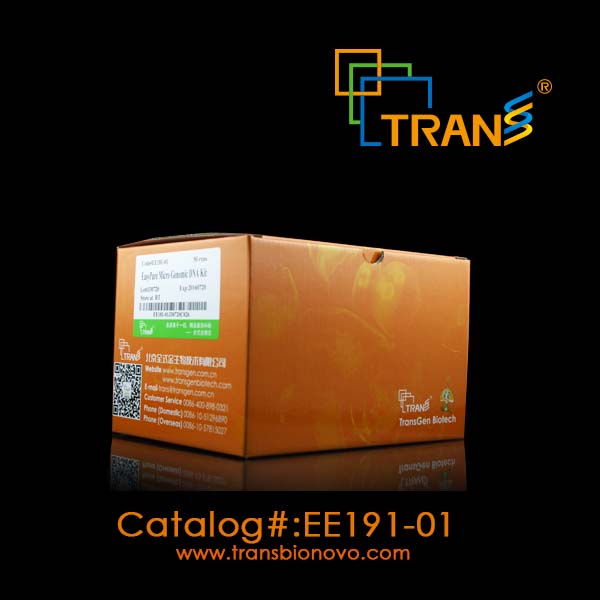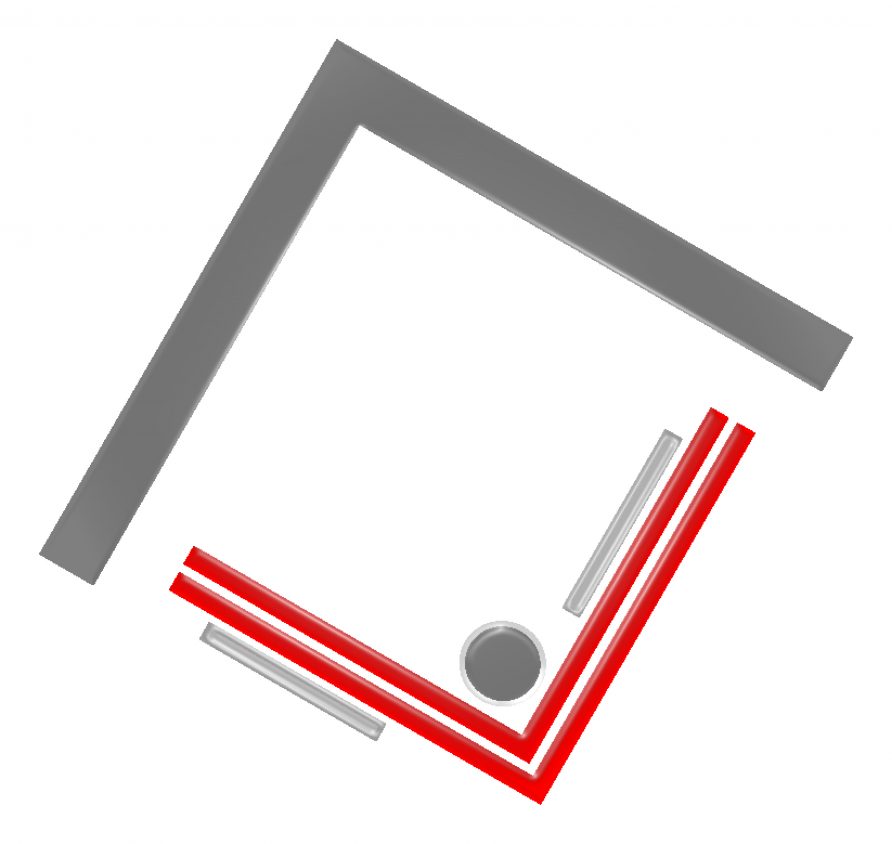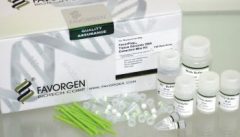EasyPure FFPE Tissue Genomic DNA Kit
The EasyPure® FFPE Tissue gDNA Extraction Kit is optimized to extract genomic DNA from formalin-fixed and paraffin-embedded tissues. Importantly, the FFPE tissue extraction kit utilizes an unique lysis buffer to release DNA from FFPE tissues. Subsequently, DNA binds to silica-based column and contaminants flow through. DNA is eluted from the membrane. Ultimately, the isolated genomic DNA is suitable for PCR, qPCR, next-generation sequencing and other molecular biology applications.
Advantages of the EasyPure FFPE Tissue Genomic DNA Kit
- Simple and fast procedure : no centrifugation steps are required
- Pure DNA from FFPE tissues : Complete removal of contaminants and inhibitors
Kit Contents:
Lysis Buffer 15 (LB15) : 11 ml
Binding Buffer 15 (BB15) : 11 ml
Clean Buffer 15 (CB15) : 6 ml
Wash Buffer 15 (WB15) : 12 ml
Elution Buffer (EB) : 25 ml
Proteinase K (20 mg/ml) : 1 ml
Genomic Spin Column with Collection Tubes : 50 each
Procedures
1-
A. Formalin-fixed tissue: Place 10-30 mg chopped tissue into a sterile 1.5 ml microcentrifuge tube.
- Add 500 μl 1×PBS and mix thoroughly by vortexing. Incubate at room temperature for 1 minute. Centrifuge at 12,000×g for 30 seconds and remove the supernatant.
- Repeat the above step twice.
B. FFPE sample block: Trim excess paraffin off the tissue and scrap 10-30 mg tissue by a scalpel. FFPE section: Scrap tissue form 3-10 sections (5-10 μm thick) and place into a sterile 1.5 ml microcentrifuge tube.
- Add 1 ml xylene to the sample, close the lid and vortex vigorously for 10 seconds. Centrifuge at 12,000×g for 2 min, then
remove the supernatant by pipetting. (It is recommended to carefully perform this step in a fume hood because xylene is high toxic chemical). - Add 1 ml ethanol (96–100%) to the pellet, and mix by vortexing. Centrifuge at 12,000×g for 2 minutes, then remove the supernatant by pipetting.
- Open the tube and incubate at room temperature or up to 37°C until all residual ethanol has evaporated.
2- Add 200 μl of LB15 and 20 μl of Proteinase K to resuspend the pellet, mix thoroughly by vortexing. Incubate at 56°C for 1 hour (or until the sample has been completely lysed). In the meantime, prepare 90°C water bath or heating block for the next step. If the water bath or heating block from this step will be used for the next step, we suggest to leave the sample at room temperature after this incubation and wait until the water bath or heat block has reached 90°C.
3. Incubate at 90°C for 1 hour. Briefly centrifuge the tube to remove drops from the lid. The incubation at 90°C in LB15 Buffer can partially reverse formalin-induced crosslinking of nucleic acids. Longer incubation time and higher temperature may result in more fragmented DNA.
Optional: If RNA-free genomic DNA is needed, add 10 μl of RNase A(20 mg/ml, Cat. No. GE101)to the lysate, incubate at room temperature for 2 minutes.
4. Add 200 μl of BB15 to the sample, and mix thoroughly by vortexing (white precipitates may form).
5. Add 250 μl of 100% ethanol, and mix thoroughly by vortexing (if there are white precipitates, vortex until they disappear). Briefly centrifuge the 1.5 ml tube and transfer all the lysate to a Genomic Spin Column, then centrifuge the tube at 12,000×g for 1 minute, discard the flow-through.
6. Add 500 μl of CB15 (make sure that ethanol has been added), and centrifuge at 12,000×g for 30 seconds, discard the flow-through.
7. Add 500 μl of WB15 (make sure that ethanol has been added), and centrifuge at 12,000×g for 30 seconds, discard the
flow-through.
8. Repeat step 7 once.
9. Centrifuge the Spin Column at 15,000 ×g for 2 minutes. Open the tube and air-dry the Spin Column at room temperature to evaporate the residual ethanol.
10. Place the Spin Column in a sterile 1.5 ml microcentrifuge tube. Add 30-100 μl of Elution Buffer (for higher yield, prewarm the buffer to 65°C) or distilled water (pH >7.0) to the center of the membrane. Incubate at room temperature for 1 minute. Centrifuge at 12,000×g for 1 minute to elute the DNA.
Notes
- Too many starting materials will affect DNA yield.
- Fix tissue samples as quickly as possible after surgical removal. Use a fixation time of 14-24 hours (longer fixation times lead to more fragmented DNA). Thoroughly dehydrate samples prior to embedding because residual formalin can inhibit the Proteinase K digestion.
- Use sterile tubes and pipette tips to avoid DNase contamination.
Manual and datasheet:
Additional information
| Format | 50 rx |
|---|---|
| Supplier |
Ask a question about EasyPure FFPE Tissue Genomic DNA Extraction Kit – EE191
1 review for EasyPure FFPE Tissue Genomic DNA Extraction Kit - EE191
You must be logged in to post a review.




Simon Roy –
I used it to extract human gDNA from body fluids and in comparison with EE151 and BloodZol, this kit provided the 2nd best DNA yield, high-quality on agarose gel, but mostly, the DNA was completely free of proteins. The highest DNA yield was obtained with Bloodzol (also largest DNA size on agarose gel) but it proteins remained. Therefore, we recommend the use of this Kit for DNa extraction from body fluids to FFPE tissue!